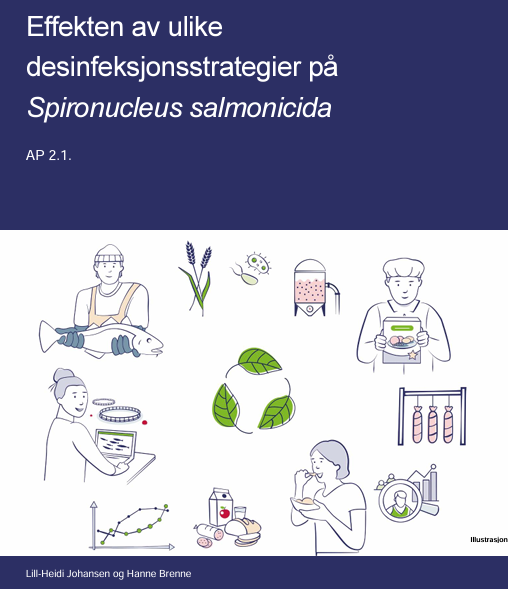|

Researchers wanted to investigate minimum doses to inactivate S. salmonicida.
New Tool: UV Treatment Proves Effective Against Spironucleus Salmonicida in Hatchery Facilities
 (NORWAY, 12/27/2024)
(NORWAY, 12/27/2024)
UV treatment has emerged as a highly effective method for combating the parasite Spironucleus salmonicida in aquaculture hatchery systems. This development offers a significant breakthrough for stakeholders in the aquaculture industry, who have long struggled with the challenges posed by this persistent parasite.

The Challenge of Spironucleus Salmonicida
Spironucleus salmonicida is a single-celled parasite capable of causing severe disease in farmed salmon at sea. It is believed that salmon are initially infected in freshwater environments, making hatchery facilities a critical point for intervention. Eradicating the parasite has proven difficult, but recent research demonstrates that UV light, when applied correctly, can effectively neutralize this harmful organism.
Testing Two UV Technologies
Researchers conducted a controlled laboratory trial to compare the effectiveness of two UV lamp types: low-pressure and medium-pressure lamps. The parasite was exposed to varying UV doses, and its survival rate was assessed post-treatment.
.png)
LP and MP UV lamps, working mechanism. (Figure after Vasco Mota)
The results were clear: medium-pressure lamps outperformed low-pressure lamps, even at lower UV doses.
“With medium-pressure lamps, we observed no surviving parasites at a dose of 50 mJ/cm² or higher,” explains research manager Lill-Heidi Johansen from Nofima.
Even at lower doses of 10 and 25 mJ/cm², the parasites were significantly weakened, dying within 48 hours after exposure.
Recommendations for Hatcheries
.png) Based on the study, researchers recommend a minimum dose of 50 mJ/cm² when using medium-pressure UV lamps in hatchery facilities. Based on the study, researchers recommend a minimum dose of 50 mJ/cm² when using medium-pressure UV lamps in hatchery facilities.
“However, the dose should be adjusted based on water quality,” Johansen advises. “A higher level of organic material in the water can reduce the effectiveness of UV treatment.”
Implications for the Aquaculture Industry
These findings represent a significant step forward for the aquaculture industry. Effective control of Spironucleus salmonicida in hatchery systems will lead to healthier fish stocks and enhanced production outcomes.
“This provides us with a new tool in the fight against this troublesome parasite,” Johansen affirms.
Next Steps: Fish Trials and Further Research
Building on these promising results, researchers are now preparing to conduct fish trials at the Fish Health Laboratory in Tromsø. The trials will focus on Spironucleus salmonicida infections within Recirculating Aquaculture Systems (RAS) and evaluate the effectiveness of the recommended UV dose (50 mJ/cm²).
 In addition, the research team will explore ozone treatment as a complementary disinfection method. Another critical aspect of the study involves pinpointing where the parasite resides within the RAS system. In addition, the research team will explore ozone treatment as a complementary disinfection method. Another critical aspect of the study involves pinpointing where the parasite resides within the RAS system.
“Understanding the parasite's location in the RAS system is essential for developing the most effective disinfection strategies,” says senior researcher Carlo Lazado, who is leading the upcoming trials.
A Promising Path Forward
The research underscores the potential of UV treatment as a game-changer for parasite control in aquaculture. By addressing persistent challenges like Spironucleus salmonicida, the industry can enhance fish health, optimize production, and ensure sustainable growth. With further studies underway, these findings lay the groundwork for more comprehensive and effective strategies in hatchery management.
[email protected]
www.seafood.media
Information of the company:
|
Address:
|
Muninbakken 9-13
|
|
City:
|
Breivika
|
|
State/ZIP:
|
(N-9291)
|
|
Country:
|
Norway
|
|
Phone:
|
+47 77 62 90 00
|
|
Fax:
|
+47 77 62 91 00
|
|
E-Mail:
|
[email protected]
|
More about: 
|
|
|
|



